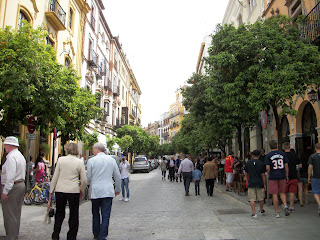For the second leg of my spring break, I ventured to Athens, Greece. I have several Greek friends from home that have been to Greece and its islands many times with their families. I did careful research and asked them the best places to see before I left. Athens is one of the oldest cities in the world with its recorded history dating back almost 4,000 years. Ancient Athens was the birthplace of democracy and a thriving center for art, culture and especially Plato and Aristotle’s philosophy. The monuments that the ancient Greeks left behind are the source of Greek pride and heritage. They propel Athens as a city of antiquated wisdom and developing cosmopolitan metropolis. As the birthplace of the modern Olympic Games, Greece was thrilled to reestablished their reputation in the western world by hosting the 2004 Olympic Games. This prompted an influx of progress of modern development in the city.
We stayed in an area called Monastiraki, which is the premiere shopping district in Athens. There, we enjoyed the market with beautiful Greek souvenirs and amazing cafes and restaurants. Greek cuisine is incredible, I never knew much about it before visiting Greece. Now, I thoroughly enjoy:
· tzatziki (yogurt with cucumber and garlic puree)
· gyros
· eggplant salad
· classic Greek salad
· All types of olives
· spanakopita (spinach and feta pastry)
· pita
· moussaka (ground lamb and eggplant casserole)
· baklava (pastry with nuts and honey)
· Greek coffee
The food was so fresh and tasty that we made any excuse to eat! I was equally enchanted with the ancient Greek monuments. We climbed to the top of the Acropolis, which provided us with an incredible view of the neighborhoods Plaka, Gazi, and Monastiraki. In Greek, “Acropolis” literally means “high city,” similar to Citadel, in English. The Acropolis in Athens includes the Temple of Athena Nike, the remains of an outdoor arena, Theatre of Dionysus and then the majestic Parthenon in the center. The Parthenon is dedicated to the Greek goddess, Athena, the protector of Athens, built in 438 BC.
That evening, we took a tram up Lykavittos Mountain, one of the highest peaks in Athens. We took the funicular up through the mountain and watched the sunset from the top. There is also a beautiful 19th century Greek Orthodox church, The Chapel of St. George, on Lykavittos.
We took an incredible day cruise from the Athens’ port, Piraeus, and visited three beautiful Greek islands. The day was a little cool and breezy, but sunny and the Aegean Sea was stunning. The first island we visited was Hydra, which allows no cars, so the only forms of transportation are donkey, bicycle and on foot. Hydra is also known for having a large population of cats. I was thrilled because I really miss my two cats from home! Between Hydra and the next island, Poros, the cruise ship was flying over white caps and crazy waves. The whole ship was going wild, so it took us twice as long to reach Poros. Therefore, we had a tragically short 30 minutes to see the island. I snapped a few pictures before we had to board to ship bound for the last island. On Aegina, the third island, we walked around and purchased the island’s infamous red pistachios, which were delicious. I learned that Aegina was a former rival of Athens in the ancient times and was a great sea power of that era. Sea breezed, sunburned and a little exhausted, we sat down a classic Greek meal of tzatziki and Greek salad.
I am so glad that I had the opportunity to see Athens and a few Greek islands. I would love to return someday to spend time on the pristine beaches of Santorini and Mykonos.

























































